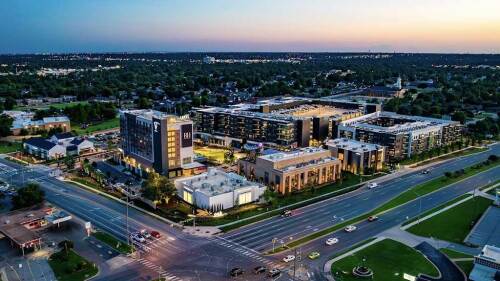- Infill retail requires skillful balance of its de facto mixed-use nature
- Transit-based projects are the most prolific and most promising of retail opportunities
- Why a housing developer doesn’t want a hot grocer on the ground floor, but loves it across the street
Retail developers are finding that urban sites are among the best new and ongoing development opportunities given the demographic shifts to cities, said panelists of the ULI Fall Meeting in Chicago, and transit-oriented development is a top prospect for retail and retail-housing mixed use. But urban mixed-use comes with significant planning and operational challenges.
John Bucksbaum, CEO of Bucksbaum Retail Properties and formerly of General Growth Properties, observed that the success of suburban mall development in recent decades is going urban. “In suburban malls, developers and retailers pretty much knew what to expect…. I knew many of these successful retailers, in order to maintain top-line growth, would have to edge into higher density and urban locations.”
In urban retail, a project is by definition going to be mixed-use, and panelists recognized the importance of detailed, well-planned projects, especially when there is residential involved.
“Retail with apartments can be great, but it’s not good if the retail is suffering … residents have to walk past empty storefronts,” said Matthew Wakenight, senior vice president for Equity Residential Properties. He cited a property where popular nail salons were among the first to respond, but there were many such tenants in the neighborhood. The team held out -- for months -- for higher end shops, and brought in a wine bar and others that took nurturing and convincing to come into the project.
He added, “And you’d think we (as apartment owner/developers) would want to be next to a Whole Foods” -- because it is one of the hottest grocer operators in urban locales -- “but we’d much rather have them across the street.” The middle-of-the-night trash trucks, parking complications and other issues are tough on residents, he said.
“But that’s retail,” said Eric Hohmann of Madison Marquette, half jokingly, in citing the activity and attraction of urban living.
“Having done a lot of vertical (higher density) mixed use, I can say I’ve developed an appreciation for the horizontal,” he quipped, “but you’re really creating a vibrant experience that a lot of people seek out.” The key is getting the mix and the mix of uses right, from fire access and loading docks to parking, life-safety requirements “and trucks that beep at 3 a.m.”
One really interesting new concept, according to Wakenight: Lobby retail. Retail spaces nestled into the common areas of a residential or office or mixed-use property can enliven the space for users, and drive new value for the developer/owners.


![20250517 PW - SAC Health - 02 web[1].jpg](https://cdn-ul.uli.org/dims4/default/43570aa/2147483647/strip/true/crop/2500x1405+0+130/resize/500x281!/quality/90/?url=https%3A%2F%2Fk2-prod-uli.s3.us-east-1.amazonaws.com%2Fbrightspot%2F07%2F06%2F6a84cb3148b78f5e1c660a2877a9%2F20250517-pw-sac-health-02-web1.jpg)

